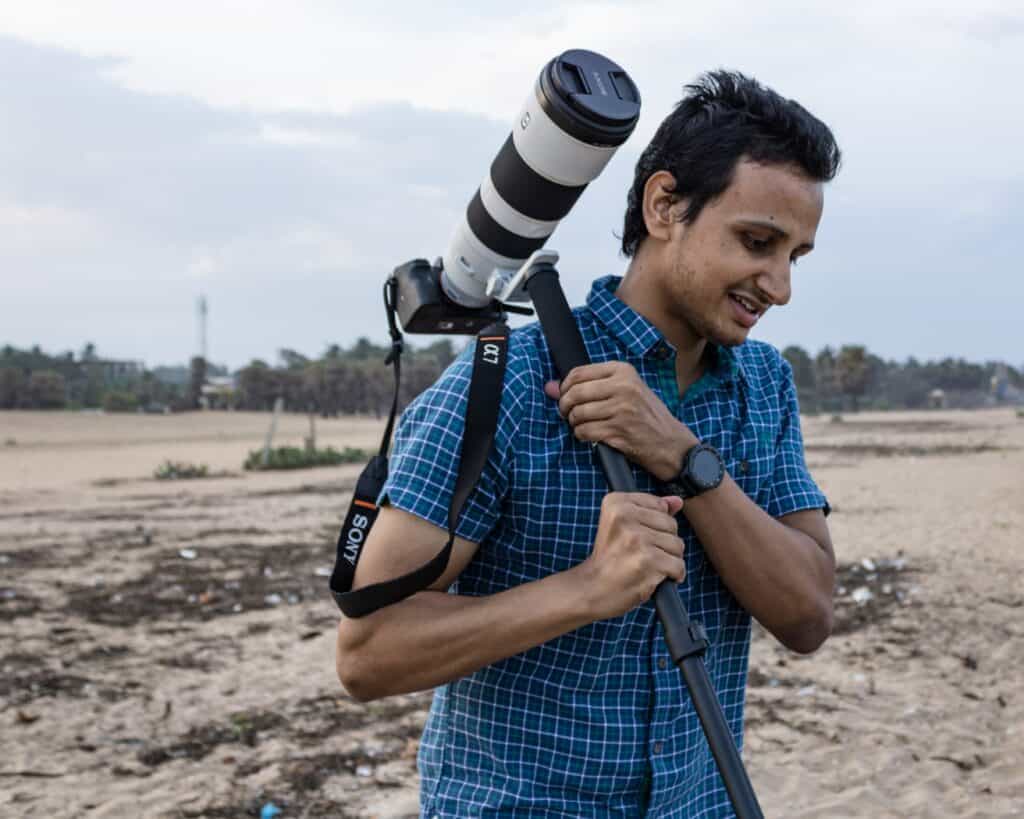Wildlife photography is power, awe-inspiring, and has the power to influence society into caring about the animals we share our planet with. But you don’t have to go out to the Amazon jungle or African safaris for this- just your friendly neighborhood zoo! With the right tricks, you can capture remarkable wild animals in zoos that look like they are out frolicking in the wild.
Here are our 6 tips for capturing amazing animal photography at the zoo!
Tips for Zoo Photography
Here are six tips to take your zoo photography to the next level.
1. Use a shallow depth of field to shoot through fencing.

The barricades that keep the animals and ourselves safe are also the force that stifle our photography. This can make zoo photography very difficult as the goal is to make the animals look like they’re in a wild, natural environment. However, there is a solution to this problem: shallow depth of field.
Depth of field refers to how much of an image is in focus. When a depth of field is shallow, that tends to mean that just the subject is in focus and the rest of the image blurs away. Depth of field is controlled by the aperture. The smaller the number, the wider your aperture. The wider the aperture, the shallower the depth of field. Apertures that are shallow range from F/2.8 all the way to F/1.2.
Most think of depth of field in reference to whatever is behind the subject. But depth of field affects whatever is in front of the subject too! If you’re shooting through a chain link fence or a reflective glass surface, shallow depth of field will blur this away and make it look as if there was no fence there at all.
2. Use a longer focal length or telephoto lens.

Using lenses that capture far away subjects as if they are right next to you is a must have for an animal photographer, whether at a zoo or not.
Telephoto lenses are long focal length lenses that can remind you a bit of a telescope. These lenses can zoom you very close to your subject! Used most by animal and sport photographers, telephoto lenses allow you to sit far back and capture subjects as if you were right next to them.
Most zoo subjects will be far away from you, or it may be easier to sit behind a crowd and shoot. As such, lenses like the 70-200mm F/2.8 telephoto zoom lens is a great purchase, or the 85mm F/1.4 telephoto lens is another great option.
3. Visit the animals during their natural active time.

It’s a good idea to be well versed on the animal you are photographing. If zoo hours allow, try to visit during their active hours! Nocturnal animals will likely be sleeping or hiding during the daytime, and early morning hunters will be wide awake and alert in the morning hours. This helps you capture the most unique and dynamic images.
4. Get a good spot during feeding time.

Feeding time is guaranteed to get you amazing photographs! Check the zoo’s schedule for feeding times of the animal species you want to photograph, and get there early to catch a good spot.
5. Turn your camera on to silent and do not use artificial light.
You never want your photography to interfere with what is happening. Set the camera to Silent Shooting Mode so that your shutter sounds aren’t scaring or distracting the animals. You want the behavior to be more natural and organic.
As well as this, please don’t use flashes, strobes, or speedlites! Wild animals are sensitive to these bright flashing lights and it can scare them or damage their eyesight.
6. Focus on the eyes.

Eyes are the windows to the soul and help the viewer empathize with the subject. As such, you want to make sure that the eyes are in focus!
A good way to make sure the eyes are in focus is to use the focus points on your camera. You can either set them straight in the middle or use the Q button on DSLRs and Mirrorless cameras to move the focus points around. Then focus on the eyes by keeping the shutter down half way to lock the focus, and proceed to move the camera to the ideal composition.
Conclusion
In conclusion, using the right equipment settings and ensuring your timing is good are the main keys to success at the zoo! The zoo is a wonderful place to capture images and practice your photography without stress or worry. Additionally, you can even use your photographs to help promote animal conservation- an added bonus!
